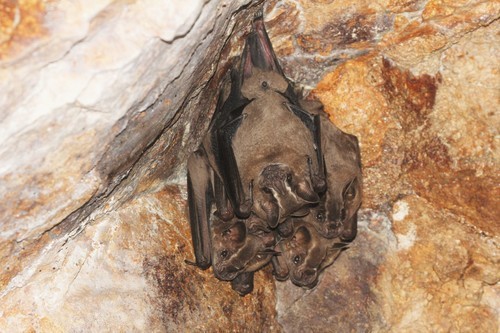Great fruit-eating bat
A species of Neotropical fruit bats Scientific name : Artibeus lituratus Genus : Neotropical fruit bats
Great fruit-eating bat, A species of Neotropical fruit bats
Scientific name: Artibeus lituratus
Genus: Neotropical fruit bats
Content
Description People often ask General Info
 Photo By Juan Cruzado Cortés , used under CC-BY-SA-4.0 /Cropped and compressed from original
Photo By Juan Cruzado Cortés , used under CC-BY-SA-4.0 /Cropped and compressed from original Description
The great fruit-eating bat (Artibeus lituratus) is a bat species in the family Phyllostomidae from South and Central America. It is found from Mexico to Brazil and Argentina, as well as in Antigua and Barbuda, Barbados, Grenada, Martinique, Saint Lucia, Saint Vincent and the Grenadines and Trinidad and Tobago. They are 10.5 g at birth and grow to 65 g as adults. 
People often ask
General Info
Lifespan
15 years
Diet
Great fruit-eating bat has a primarily frugivorous diet, with a strong preference for ripe fruits. They may also occasionally consume insects and tree-dwelling vertebrates for their nutrient diversity.
Appearance
Great fruit-eating bat is a medium-sized bat with a robust body shape. This species is coated with dense fur that's mainly two-toned, dorsal fur being dark brown and ventral fur a lighter shade. One of its significant features includes large, strong wings. Great fruit-eating bat's face is distinguished by a flattened snout and leaf-shaped nose. There are no notable differences in appearance due to age, gender, or subspecies.
Behavior
Great fruit-eating bat is a frugivorous bat species and tends to forage in tree canopies for soft fruits, not shunning carnivorous tendencies when food is scarce. This species demonstrates a social dynamic by roosting in large groups during the day. Uniquely, they employ sonar jamming to interrupt rival bats' echolocation calls during foraging, marking a fierce competitiveness. Avoiding territorial defense, their survival hinges on adaptability and food abundance.
Population
Stable
Scientific Classification
Phylum
Chordates Class
Mammals Order
Bats Family
Leaf-nosed bat Genus
Neotropical fruit bats Species
Great fruit-eating bat